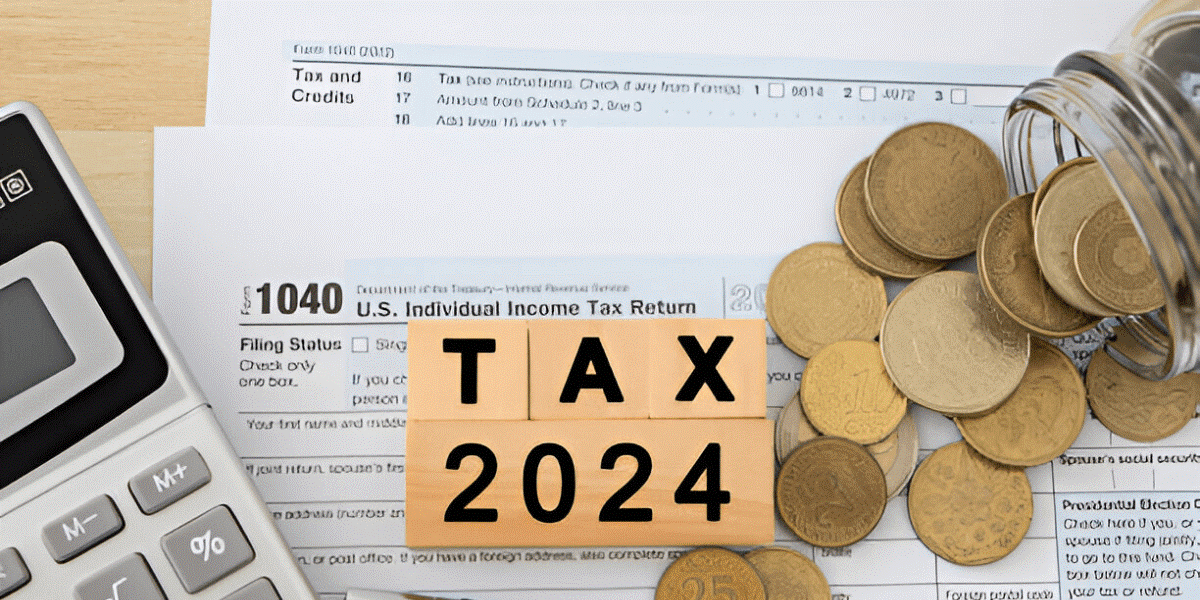Payroll Tax And Compliance In Australia - A Complete Guide
Delving into the world of payroll tax and compliance in Australia can often seem like a daunting task, but it's an essential part of running a successful business. Every Australian business owner faces the challenge of understanding and adhering to the nuanced regulations that govern how employees are paid.
Payroll tax, a significant contributor to state revenue, varies across different states and territories, each with its own set of rules and thresholds. Similarly, the broader landscape of payroll compliance encompasses a range of laws and regulations, including wages, superannuation, and taxation.
This guide aims to demystify these critical elements, offering clear insights and practical knowledge. By grasping these concepts, business owners can not only ensure legal compliance but also foster a healthier financial environment for their business. Let's explore these crucial aspects, highlighting their impact and importance in the day-to-day management of your business.
Payroll tax is an essential aspect of a business's financial obligations, not just another line item in the ledger. It's a tax that employers pay on the wages they distribute, calculated on the total wage bill. Importantly, it's not a deduction from an employee's salary but a direct responsibility of the employer. Understanding this tax is crucial for effective business management and budget planning.
The roots of payroll tax in Australia trace back to the World War II era, introduced initially as a temporary measure for war support. It became a permanent fixture in the Australian tax landscape in 1947. The 1970s brought a significant change when control over payroll tax shifted from the federal to the state level. This historical shift explains the diverse approaches and regulations we see across different states today.
Payroll tax plays a pivotal role in the financial health of state governments. It's a major revenue stream, funding a range of public services and infrastructure. The reliance on payroll tax varies from state to state, which is reflected in their distinct tax rates and thresholds.
For businesses, specifically those functioning in multiple states, understanding these variances is key to accurate financial planning and legal compliance. Payroll tax, therefore, is not merely a legal duty but a contribution to the societal and economic development of the states in which they operate.
Australia's approach to payroll tax is unique, with each state setting its own rates. This variation means that businesses operating in multiple regions need to be acutely aware of the differing costs they will incur in each. For instance, New South Wales sets its rate at 5.45%, while Victoria offers a slightly lower rate of 4.85%, with an additional concession for regional employers.
In Queensland, the rate is 4.75% for wages up to $6.5 million, increasing to 4.95% above this threshold. Such variations can significantly impact a business's financial planning, making it essential to stay informed about these differences.
The concept of a threshold plays a pivotal role in the application of payroll tax. This threshold is the point at which a business's total wage bill becomes subject to payroll tax. It acts like an allowance; only wages above this limit are taxed.
Each state sets its own threshold, adding another layer of complexity for multi-state operations. For example, Victoria sets its threshold at $700,000, whereas the Australian Capital Territory is more generous, with a $2 million threshold. These thresholds are crucial in financial planning and can influence business decisions such as hiring and expansion.
The practical effect of these varying thresholds can be best understood through examples. Consider a medium-sized business with an annual wage bill just under the threshold in a state like Victoria. This business would not be liable for payroll tax in Victoria but could face a significant tax bill in a state with a lower threshold.
Conversely, a growing business might strategically plan its expansion in states with higher thresholds to minimise payroll tax liabilities. These examples showcase the importance of understanding and accounting for payroll tax in strategic business decisions.
The landscape of payroll tax in Australia is not just about what you pay; it's equally about understanding what you don't have to. With the help of a qualified
tax agent in Sydney, certain types of wages and specific categories of employers may be exempt from payroll tax, offering substantial savings and financial advantages.
For instance, wages paid for maternity, paternity, or adoption leave are often exempt, providing relief to both employees and employers. Understanding these exemptions can significantly impact a business's financial strategy.
The Australian payroll tax system shows flexibility with tailored exemptions for certain sectors. Non-profit organisations, religious institutions, and charitable bodies often enjoy exemptions, acknowledging their unique financial structures and societal contributions.
Similarly, non-profit private schools and certain healthcare service providers, like public hospitals, are typically exempt from payroll tax. These exemptions reflect an understanding of the diverse economic roles different organisations play.
For businesses in these categories, being aware of and utilising these exemptions can be a crucial aspect of financial management and sustainability. These concessions not only provide financial relief but also support the vital services these organisations offer to the community.
The Fair Work Act 2009 stands as a cornerstone in Australian employment law, setting the benchmark for employee compensation and working conditions.
This act encompasses a wide range of employment issues, ensuring that basic rights and protections are provided to workers. It establishes the National Employment Standards (NES), which outline key aspects such as maximum weekly hours, types of leave (annual, personal, and public holidays), and guidelines for unfair dismissal, redundancy, and workplace conduct.
For businesses, compliance with the Fair Work Act is not just about following and complying with the legal standards; it's about fostering a fair, respectful, and equitable workplace.
Another key pillar in payroll compliance is the Income Tax Assessment Act 1997. This act outlines the methodology for the calculation of taxes and permissible deductions from employee wages.
It mandates employers to withhold the right amount of income tax from their employees' salaries and remit it to the Australian Tax Office (ATO). Complying with this act ensures businesses accurately meet their tax obligations, avoiding potential legal and financial pitfalls. This law is crucial for maintaining a transparent and accountable payroll system.
The Superannuation Guarantee (Administration) Act 1992 plays a critical role in the financial security of Australian workers.
It obligates employers to contribute a mandated percentage of their employees' earnings to a superannuation (retirement savings) fund. This contribution is pivotal in ensuring that employees have a secure financial foundation upon retirement.
Compliance with this act is not only a legal requirement but also a commitment to the long-term welfare of employees. Businesses must stay vigilant in calculating and making these contributions, as failure to comply can result in significant penalties and additional liabilities.
Together, these laws form a framework that guides businesses in managing their payroll responsibilities with integrity and accuracy. Understanding and adhering to these laws is imperative for operating a compliant and successful business in Australia.
Adhering to minimum wage standards is a fundamental aspect of payroll compliance in Australia. These standards, set by the Fair Work Commission and reviewed annually, ensure that employees receive fair and adequate compensation for their labour. It's not just a matter of legal compliance but a commitment to equitable treatment of employees.
The minimum wage serves as the baseline for employee earnings, but it's important to remember that various awards and agreements might set different minimum wages for different occupations or industries. For businesses, staying updated with these standards is crucial to ensure they are meeting their legal obligations and contributing to the financial well-being of their employees.
Understanding and correctly applying overtime and penalty rates is another key aspect of payroll compliance. Employees working beyond their standard hours or during unsociable hours are often entitled to additional pay.
Overtime pay compensates for extra hours worked beyond the usual full-time or part-time hours, while penalty rates are additional payments for working during non-standard hours, like evenings, weekends, or public holidays. Correct calculation and application of these rates are essential not only for compliance but also for maintaining employee morale and trust.
Compliance with leave entitlements is equally crucial. This includes managing and honouring entitlements to annual leave, sick leave, and maternity leave, among others.
These entitlements are vital for employee welfare, allowing them time off for rest, recovery, or attending to personal matters. Employers must accurately track and manage leave balances, ensuring that employees have access to the leave they are entitled to.
Proper management of leave entitlements reflects a business’s respect for its employees' rights and contributes to a positive and productive workplace environment. It's a clear demonstration of a business’s commitment to upholding not just legal standards but also ethical and humane practises in the workplace.
Managing withholding taxes is a critical component of payroll compliance. Employers are tasked with the responsibility of deducting the correct amount of income tax from their employees' wages and remitting it to the Australian Tax Office (ATO).
This process involves a careful calculation based on the employee's earnings and applicable tax brackets, ensuring accuracy in every pay cycle. Staying current with tax rates and adjustments is essential, as errors can lead to complications with the ATO, affecting both the employer and the employee.
This aspect of payroll is not just a legal requirement but also a mark of an employer's dedication to upholding a trustworthy and compliant business practise.
Superannuation contributions are a fundamental aspect of Australia’s retirement system, and employers play a significant role in this.
By law, employers must contribute a set percentage of their employees' earnings to a superannuation fund. These contributions are essential for building employees' financial security for the future.
Timely and accurate superannuation contributions reflect an employer's commitment to the long-term welfare of their workforce beyond the immediate employment period.
The Fringe Benefits Tax (FBT) is another crucial element in the payroll tax landscape. This tax applies to certain non-cash benefits provided to employees, such as company cars or living accommodations.
Understanding which benefits are taxable, calculating their value, and reporting them accurately are key compliance requirements. FBT requires meticulous record-keeping and a thorough understanding of the tax’s nuances. Employers need to be aware of these additional tax obligations to avoid unexpected liabilities and ensure comprehensive payroll compliance.
Meticulous record-keeping is the linchpin of effective payroll management. Maintaining comprehensive and accurate payroll records – encompassing details like hours worked, wages paid, taxes withheld, and leave taken – is not just a regulatory requirement but a best practise that safeguards your business.
These records are crucial for annualised salary reporting, making sure that the employees are compensated fairly according to the hours they've worked and the responsibilities they've undertaken.
Well-maintained records also serve as a reliable resource during audits, disputes, or enquiries, safeguarding the business against potential legal and financial challenges.
Understanding and fulfilling reporting obligations are key elements of payroll compliance. Single Touch Payroll (STP) has revolutionised the way businesses report payroll information to the Australian Tax Office (ATO).
Under STP, employers report salaries, wages, taxes, and superannuation information directly to the ATO at the same time they pay their employees. This system ensures up-to-date and accurate transmission of payroll data, streamlining the reporting process.
Additionally, compliance with the Pay As You Go (PAYG) withholding system is vital. This involves deducting taxes from payments to employees and contractors and regularly reporting these to the ATO. Adherence to these reporting systems not only ensures compliance but also demonstrates a business’s commitment to transparency and integrity in its financial dealings.
In conclusion, a thorough understanding and diligent management of payroll tax and compliance are pivotal for any business operating in Australia. These are not just routine tasks but vital processes that underpin the financial health and legal integrity of your business.
Staying informed and adapting to regulatory changes is not just about avoiding penalties; it's about embracing opportunities for growth and stability. By proactively engaging with these aspects of your business, you not only ensure compliance but also demonstrate a commitment to ethical practises and long-term success.
Remember, in the dynamic backdrop of business, being well-informed is your greatest asset.



















